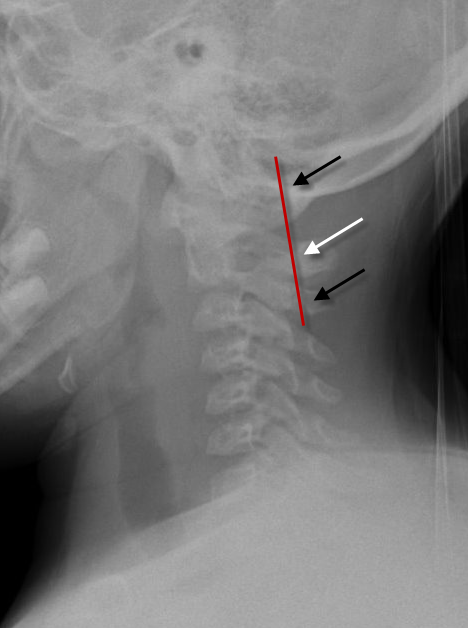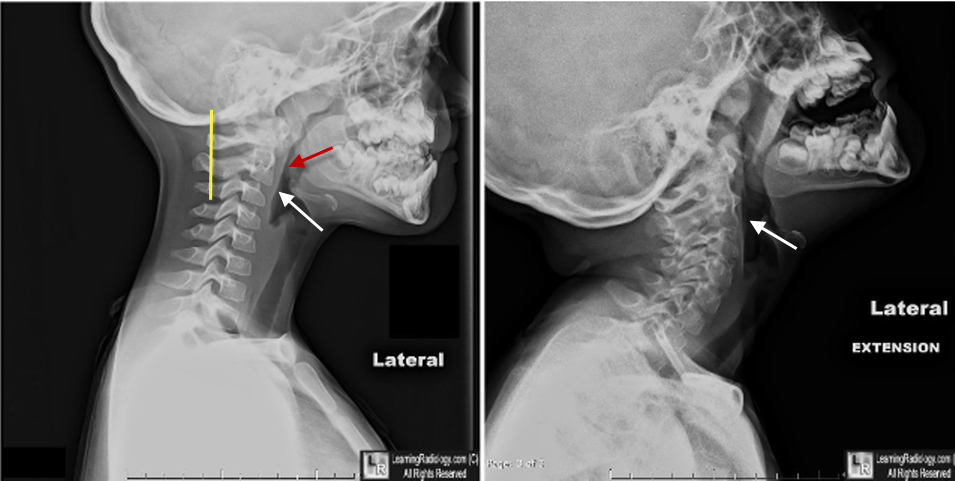|
|
Pseudosubluxation Cervical Spine
General Considerations
- Normal anterior displacement of C2 on C3, or sometimes C3 on C4, in the cervical spine of children under 8 years of age
- It is due to the increased mobility of the vertebral bodies in children, in part due to the horizontal nature of the facets joints at younger ages
- Not to be confused with a true subluxation
- It is seen with the cervical spine flexed and should disappear with the spine extended
Imaging Findings
- Pseudosubluxations rarely involve displacement of more than 4 mm
- The “posterior cervical line” (Swischuk’s Line) connecting the spinolaminar white lines of C1 and C3 should normally pass within 2 mm of the spinolaminar line of C2
- If spinolaminar white line is more than 2 mm anterior to the posterior cervical line, then a true subluxation should be considered

Posterior Cervical Line. Normally, a line (red arrow) drawn between the spinolaminar white line of C1 (top black arrow) and the spinolaminar line of C3 (bottom black arrow) will pass within 2mm of the spinolaminar white line of C2 (white arrow).
- There will be no prevertebral soft tissue swelling in a pseudosubluxation
- More importantly, a lateral view of an extended cervical spine should make a pseudosubluxation disappear

Pseudosubluxation C2 on C3. The image on the left suggests anterior displacement of C2 on C3 (white arrow). Note, however, that the chine is flexed, there is no soft tissue swelling (red arrow) and the posterior cervical line (see above-yellow line) is normal. A repeat examination a few minutes later with the neck fully extended shows the C2, C3 relationship is normal (white arrow).
|
|
|